Excursions
Way more than what meets your eye when it comes to Kandy
The Temple of the Sacred Tooth Relic
The Temple of the Sacred Tooth Relic is a world-renowned place of worship, where the left Canine tooth of Gautama Buddha is enshrined. The temple which is venerated by thousands of local & foreign devotees and tourists daily was named as a world heritage by UNESCO in 1988 (source:https://sridaladamaligawa.lk)
UdawattaKele Forest
The Udawatta Kele Sanctuary or the Royal Forest Park of Kandy is siuated on the hillside behind the Dalada Maligawa or the Temple of the Tooth Relic. This forest extents about 257 acres and is considered to be a vital Bio reserve for the much populated Kandy City. Centuries back, area surrounding Kandy had been a Rain Forest and the human settlements took place during the era of King Panditha Parakramabahu (1302-1326 AD) and in 1371 AD, King Wickramabahu made Kandy his Kingdom. During this era Kandy was called as Senkadagala. This name came into being due to a Brahmin named Senkanda, who lived in a cave at Udawattakele during that era. During the Kandyan Kingdom, this forest area behind the palace was called Uda wasala watta or the 'Upper Palace Garden' frequented by the royalty and was out of bound to the people. Since the downfall of the Kandyan Kingdom in 1815, this forest area started to loose it's pristine condition due to wood cutting etc.
(source:https://www.srilankaview.com/udawattakele.htm)
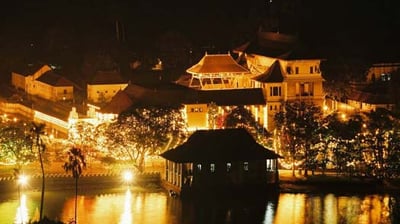

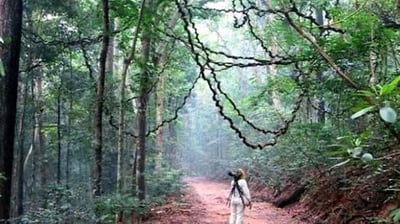

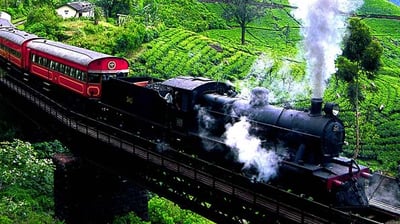

Kandy-Ella Train
Rail was introduced in Sri Lanka in 1864 to transport coffee from plantations in the hill country district of Kandy to the port city of Colombo on its way to Europe and the world market. The coffee blight of 1871 destroyed many a fine plantation and tea replaced coffee. With the development of tea plantations in the 1880s, the joint-stock companies swallowed up the former individual proprietorship of the coffee era. Under corporate ownership and management control by companies, the process of production of tea became more sophisticated and needed more and more railways built to the Kandyan highlands. To send tea to Colombo and to transport labour, machinery, manure, rice, and foodstuff, etc to Kandy, another 100 miles of railways were constructed in the tea planting districts to serve the expanding tea domain.
(Source:https://seatreservation.railway.gov.lk/mtktwebslr/)
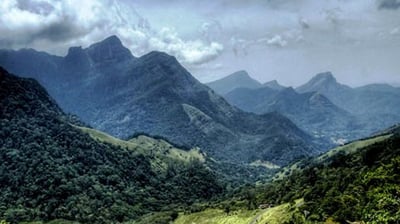

Knuckles Mountain Range
The trekkers’ favorite approach to Knuckles ranges begins on A26 main motor way running east of Kandy to Hunnsgiriya. At Hunnasiriya, B grade road leads to the Corbett’s Gap which opens up magnificent views of Knuckles range. From Corbett’s Gap the road that leads to the village of Meemure too can be travelled by a vehicle having good ground clearance.
The trekkers also have options in two more entry roads: from Matale via Rattota and Riversten; from Wattegama via Panwila. The rugged peaks of the Knuckles (Dumbara Hills) named by the British for their resemblance to the knuckles of a clenched fist. The steeply shelving mountain terrain reaches 1863 m the summit of the main Knuckles peak itself (the sixth highest in Sri Lanka) and included stand of rare dwarf cloud forest.
(Source:https://lk.lakpura.com/pages/knuckles-range)
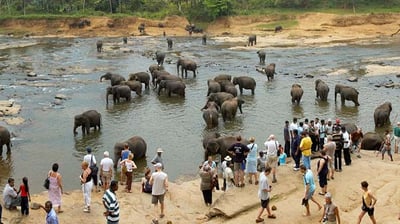

Pinnawala Iperanigama Theme Park
The Pinnawala Iparenigama Theme Park is a brand new and unique theme park in Sri Lanka, which opened its gates to the public in March 2016. It depicts traditional village life in the 17th and 18th centuries, and functions as a live folk museum. The park shows culture, cultivation methods and economic system of that prosperous era over three centuries ago. Visitors get to see the many important locations in the typical village of that period and engage in many fun activities.
(Source:https://lk.lakpura.com/pages/pinnawala-iperanigama-theme-park)
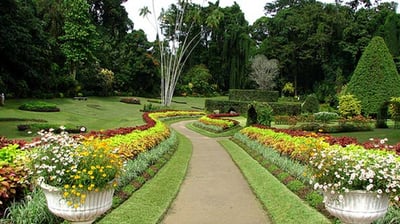

Royal Botanic Gardens Peradeniya
The Royal Botanic Gardens at Peradeniya was established in 1821, six years after the final occupation of the Kandyan Kingdom by the English. The site is less than 5.5 Km from Kandy on the Colombo Road, and occupies a loop of the river Mahaweli, which surrounds it on all sides except the south, where it is bounded by the main road. The area 61.25 ha in extent, is about 1550ft from sea level. More than 4000 species of plants including woody trees, Palms, Ferns, Orchids and shrubs currently present within the gardens.
(Source:https://www.botanicgardens.gov.lk/service/royal-botanic-gardens-peradeniya/)
Payment Methods
